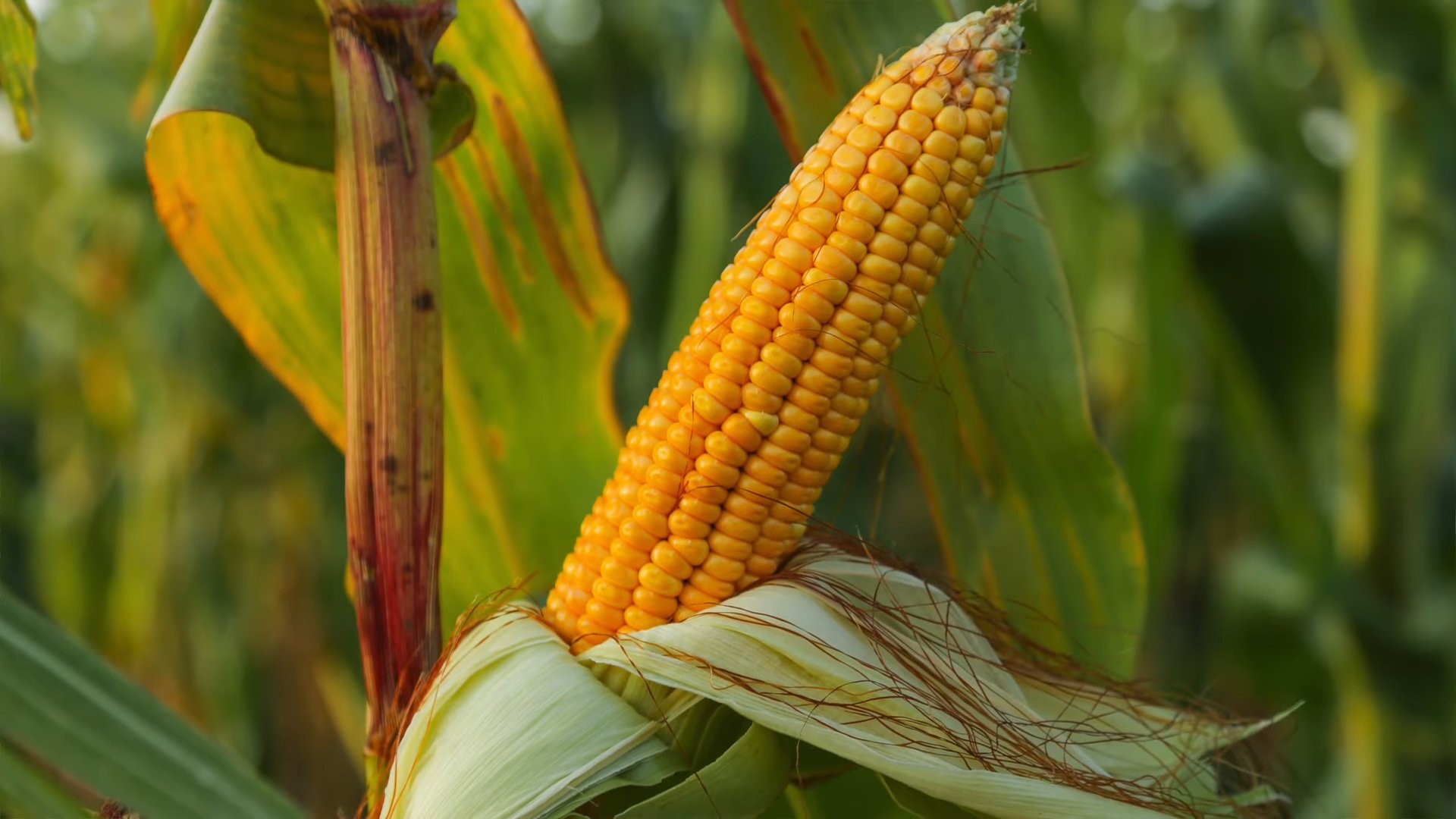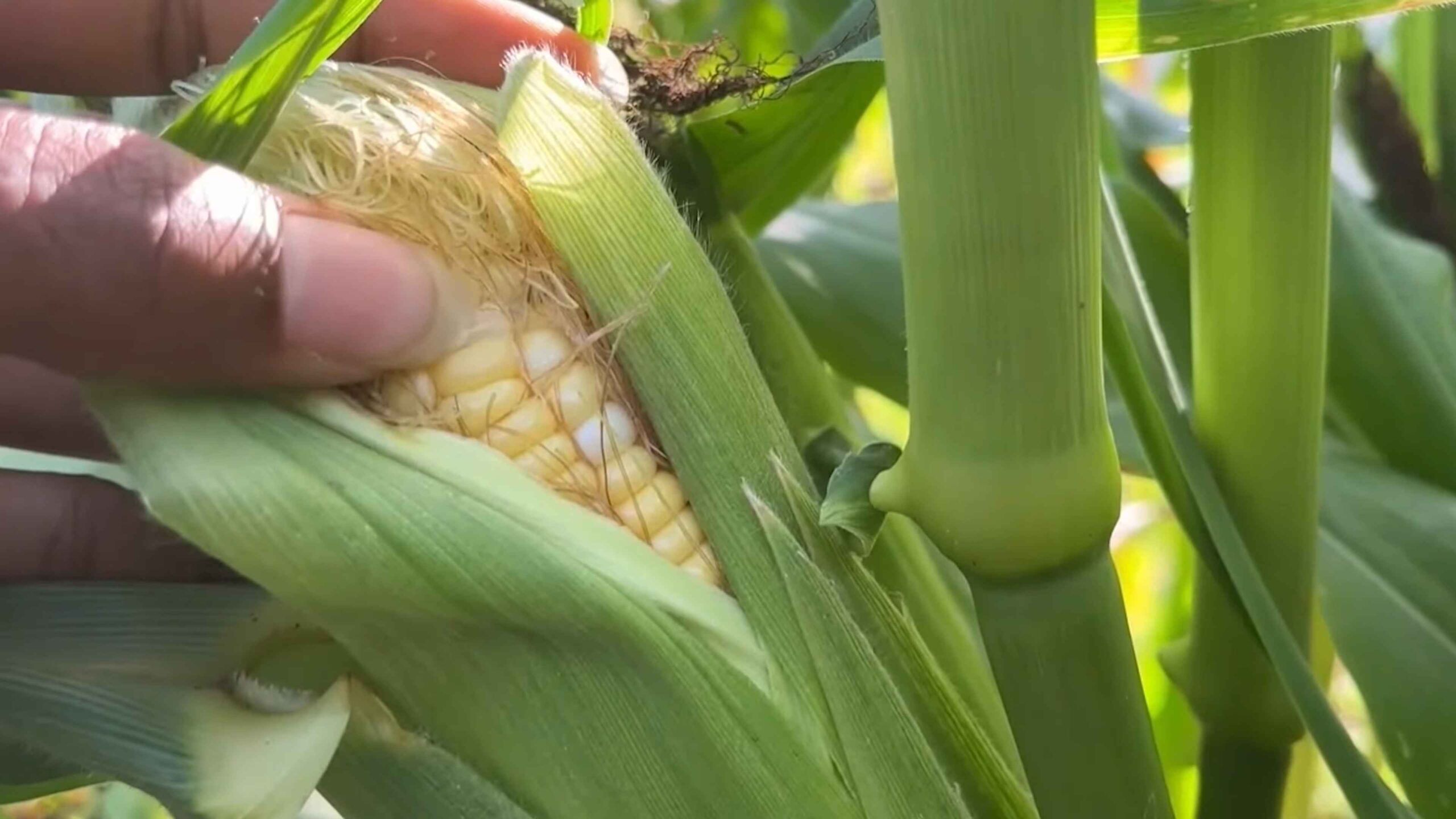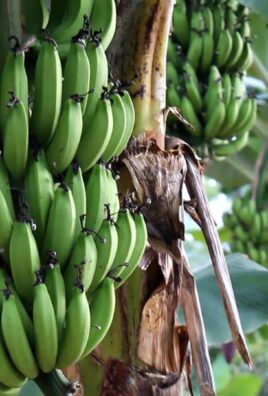Planting Sweet Corn might seem daunting, but trust me, with a few simple tricks and a little DIY spirit, you can enjoy the taste of homegrown sweetness right in your backyard! Imagine biting into a juicy, sun-ripened ear of corn that you nurtured from a tiny seed. That’s the magic we’re unlocking today.
For centuries, corn has been a staple crop, deeply woven into the cultures of the Americas. From ancient civilizations to modern-day barbecues, its versatility and deliciousness have made it a beloved food. But you don’t need acres of farmland to experience the joy of growing your own.
Why bother with the effort? Well, store-bought corn simply can’t compare to the flavor of freshly picked sweet corn. The sugars in corn begin converting to starch almost immediately after harvest, so the sooner you eat it, the sweeter it will be. Plus, planting sweet corn yourself gives you complete control over what goes into your food – no pesticides or questionable practices needed. I’m going to share some easy-to-follow DIY hacks that will help you maximize your yield, even in small spaces. Get ready to transform your garden into a sweet corn paradise!

Planting Sweet Corn: A Beginner’s Guide to a Bountiful Harvest
Okay, so you want to grow your own sweet corn? Awesome! There’s nothing quite like biting into a freshly picked ear of corn that you nurtured from a tiny seed. It’s surprisingly easy, even if you’re a complete newbie. I’m going to walk you through everything you need to know, from choosing the right variety to dealing with pesky pests. Let’s get started!
Choosing the Right Sweet Corn Variety
Before you even think about digging in the dirt, you need to pick the right corn for your area. Not all sweet corn is created equal! Here’s what to consider:
* Days to Maturity: This is crucial! Check your local growing season length. You need a variety that will mature before the first frost. Look for this information on the seed packet. I usually opt for varieties that mature in 70-80 days to be safe.
* Disease Resistance: Some varieties are more resistant to common corn diseases like rust and smut. If you’ve had problems with these in the past, definitely look for resistant strains.
* Kernel Color: Do you want yellow, white, or bicolor corn? This is purely a matter of personal preference. I love the look of bicolor corn, but yellow is a classic.
* Sweetness: There are different types of sweet corn based on their sugar content and how long they stay sweet after picking.
* Standard Sweet Corn: These are the older varieties. They’re sweet, but the sugar converts to starch relatively quickly after harvest. You need to eat them soon after picking.
* Sugary Enhanced (se) Sweet Corn: These varieties have a higher sugar content and hold their sweetness longer than standard varieties. They’re a good choice if you can’t eat your corn immediately.
* Supersweet (sh2) Sweet Corn: These are the sweetest of the sweet corns! They have a very high sugar content and stay sweet for days after harvest. However, they can be a bit more finicky to grow.
* Plant Height: Consider the height of the mature plants, especially if you have limited space. Some varieties can grow quite tall!
Preparing Your Planting Site
Corn is a heavy feeder, meaning it needs a lot of nutrients to grow well. Proper soil preparation is key to a successful harvest.
* Sunlight: Corn needs at least 6-8 hours of direct sunlight per day. Choose a location that gets plenty of sun.
* Soil: Corn prefers well-drained soil that is rich in organic matter. A slightly acidic to neutral pH (6.0-7.0) is ideal.
* Soil Testing: I highly recommend getting your soil tested before planting. This will tell you what nutrients are lacking and what amendments you need to add. You can usually get your soil tested through your local agricultural extension office.
* Clearing the Area: Remove any weeds, rocks, or debris from the planting area.
* Tilling or Digging: Loosen the soil to a depth of at least 12 inches. This will allow the roots to penetrate easily. You can use a tiller or a shovel, depending on the size of your planting area.
* Adding Amendments: Based on your soil test results, add any necessary amendments. Compost is always a good addition, as it improves soil structure and adds nutrients. You can also add fertilizer, but be sure to follow the instructions on the label. I like to use a balanced fertilizer like 10-10-10.
* Leveling the Soil: Rake the soil to create a smooth, even surface.
Planting Your Sweet Corn
Now for the fun part! Planting the seeds.
1. Timing: Corn is a warm-season crop, so you need to wait until the soil has warmed up to at least 60°F (15°C) before planting. This is usually a couple of weeks after the last frost. You can use a soil thermometer to check the temperature.
2. Planting Depth: Plant the seeds about 1-2 inches deep.
3. Spacing: Space the seeds about 6-12 inches apart in rows that are 2-3 feet apart. Corn needs to be planted in blocks, not just a single row, for proper pollination. The wind carries the pollen from the tassels (the male flowers at the top of the plant) to the silks (the female flowers on the ears). If you only have one row, the pollination will be poor, and you’ll end up with ears that are missing kernels.
4. Watering: Water the seeds thoroughly after planting. Keep the soil moist but not soggy until the seeds germinate.
5. Marking Rows: Clearly mark your rows so you know where you planted the corn.
Caring for Your Sweet Corn
Once your corn seedlings emerge, you’ll need to provide them with proper care to ensure a good harvest.
* Watering: Corn needs consistent moisture, especially during tasseling and silking. Water deeply whenever the top inch of soil feels dry.
* Weeding: Keep the area around your corn plants free of weeds. Weeds compete with the corn for water and nutrients. You can hand-pull weeds or use a hoe. Be careful not to damage the corn roots.
* Fertilizing: Corn is a heavy feeder, so you may need to fertilize it again after the seedlings emerge. I usually side-dress my corn with a nitrogen fertilizer when the plants are about knee-high. Side-dressing means applying the fertilizer along the sides of the rows.
* Thinning: If your seedlings are too close together, thin them out to the recommended spacing.
* Pest Control: Corn is susceptible to a variety of pests, including corn earworms, aphids, and Japanese beetles.
* Corn Earworms: These are the most common pest of sweet corn. They burrow into the ears and feed on the kernels. You can control them by applying mineral oil to the silks after they emerge. I use an eyedropper to apply a few drops of oil to each silk. You can also use Bacillus thuringiensis (Bt), a natural insecticide, to control corn earworms.
* Aphids: These tiny insects suck the sap from the corn plants. You can control them by spraying the plants with insecticidal soap or neem oil.
* Japanese Beetles: These beetles feed on the leaves and silks of the corn plants. You can hand-pick them off the plants or use a Japanese beetle trap.
* Disease Control: Corn can also be affected by various diseases, such as rust and smut. Choose disease-resistant varieties to minimize the risk of these problems. If you do see signs of disease, you can treat the plants with a fungicide.
Harvesting Your Sweet Corn
The moment you’ve been waiting for! Harvesting your sweet corn.
1. Timing: Sweet corn is usually ready to harvest about 20-25 days after the silks emerge. The silks will turn brown and dry, and the ears will feel plump.
2. Checking for Ripeness: To check for ripeness, peel back the husk slightly and puncture a kernel with your fingernail. If the liquid that comes out is milky, the corn is ready to harvest. If the liquid is clear, the corn is not ripe yet. If the liquid is thick and pasty, the corn is overripe.
3. Harvesting: To harvest the corn, grasp the ear firmly and twist it downward. The ear should snap off easily.
4. Enjoying: Eat your sweet corn as soon as possible after harvesting. The sugar content will start to decline as soon as the corn is picked. You can grill it, boil it, steam it, or roast it. I love to grill mine with a little butter and salt.
Troubleshooting Common Problems
Even with the best planning, things can sometimes go wrong. Here are some common problems and how to fix them:
* Poor Germination: If your seeds don’t germinate, it could be due to several factors:
* Cold Soil: Make sure the soil is warm enough before planting.
* Poor Seed Quality: Use fresh seeds from a reputable source.
* Overwatering: Soggy soil can cause the seeds to rot.
* Pests: Birds or rodents may be eating the seeds.
* Poor Pollination: If your ears are missing kernels, it’s likely due to poor pollination. Make sure you plant your corn in blocks, not just a single row. You can also hand-pollinate the corn by shaking the tassels over the silks.
* Stunted Growth: Stunted growth can be caused by a lack of nutrients, water, or sunlight. Make sure your corn plants are getting enough of all three.
* Pest Infestations: Regularly inspect your corn plants for pests and take action as soon as you see them

Conclusion
So, there you have it! Planting sweet corn doesn’t have to be a daunting task reserved for seasoned farmers. With a little planning, preparation, and this straightforward DIY trick, you can cultivate your own delicious, homegrown sweet corn right in your backyard. The satisfaction of biting into a juicy, freshly picked ear of corn that you nurtured from seed is truly unparalleled. Forget the bland, mass-produced corn from the grocery store; this is about experiencing the real, vibrant flavor of summer.
This method, focusing on [mention the specific DIY trick from the main article, e.g., “square foot gardening” or “succession planting”], offers several key advantages. It maximizes space, minimizes weeding, and ensures a continuous harvest throughout the season. It’s a game-changer for small gardens and beginner gardeners alike. Plus, it’s incredibly rewarding to watch those tiny seeds transform into towering stalks laden with golden kernels.
But don’t stop there! Feel free to experiment with different varieties of sweet corn to find your personal favorite. Try heirloom varieties like ‘Golden Bantam’ for a taste of nostalgia, or opt for newer, disease-resistant hybrids for a more reliable harvest. You can also adjust the spacing slightly based on your specific soil conditions and climate. Consider companion planting with beans or squash to further enhance your garden’s ecosystem and improve yields.
And remember, the key to successful sweet corn cultivation is consistent watering and fertilization. Keep a close eye on your plants, and address any issues promptly. With a little care and attention, you’ll be rewarded with a bountiful harvest of sweet, juicy corn that will be the envy of your neighbors.
We wholeheartedly encourage you to give this DIY trick a try. It’s a fun, educational, and ultimately delicious way to connect with nature and enjoy the fruits (or rather, vegetables) of your labor. Once you’ve harvested your first batch of homegrown sweet corn, we’d love to hear about your experience! Share your photos, tips, and any variations you’ve tried in the comments below. Let’s build a community of sweet corn enthusiasts and help each other grow the best corn possible! Happy planting!
Frequently Asked Questions (FAQ)
Q: How much space do I really need to plant sweet corn using this method?
A: That’s a great question! One of the beauties of this DIY trick is its space-saving nature. While traditional corn planting often requires long rows, this method, particularly if it involves square foot gardening or intensive planting, allows you to grow a significant amount of corn in a relatively small area. For example, using a square foot gardening approach, you can typically plant four corn stalks per square foot. So, a 4×4 foot raised bed could potentially accommodate 64 corn stalks. However, remember that corn needs to be planted in blocks rather than a single row for proper pollination. So, even if you only have a small space, you can still grow a decent amount of corn. The key is to ensure adequate sunlight and proper soil preparation.
Q: What kind of soil is best for planting sweet corn?
A: Sweet corn thrives in well-drained, fertile soil that is rich in organic matter. Ideally, the soil should have a pH between 6.0 and 6.8. Before planting, amend your soil with compost, aged manure, or other organic materials to improve its fertility and drainage. If your soil is heavy clay, consider adding sand or other amendments to improve its structure. A soil test can also help you determine if your soil is lacking any essential nutrients. Remember, healthy soil is the foundation for a successful sweet corn crop.
Q: How often should I water my sweet corn plants?
A: Sweet corn requires consistent moisture, especially during germination and ear development. Water deeply and regularly, aiming for about 1 inch of water per week. During hot, dry periods, you may need to water more frequently. The best time to water is early in the morning, which allows the foliage to dry before nightfall and reduces the risk of fungal diseases. Avoid overhead watering, as this can also promote disease. Instead, use a soaker hose or drip irrigation to deliver water directly to the roots.
Q: When is the best time to harvest my sweet corn?
A: Knowing when to harvest sweet corn is crucial for getting that perfect, sweet flavor. The general rule of thumb is to harvest when the silks turn brown and dry, about 20-25 days after the silks first appear. You can also check the kernels by peeling back the husk slightly and puncturing a kernel with your fingernail. If the liquid that comes out is milky, the corn is ready to harvest. If it’s clear, the corn is not quite ripe. If it’s doughy, the corn is overripe. The ears should also feel plump and full. Once harvested, sweet corn should be eaten as soon as possible for the best flavor. The sugars in the kernels start to convert to starch soon after picking.
Q: What are some common pests and diseases that affect sweet corn, and how can I prevent them?
A: Sweet corn can be susceptible to a variety of pests and diseases, including corn earworms, European corn borers, and various fungal diseases. To prevent these problems, practice good garden hygiene, such as removing plant debris at the end of the season. You can also use row covers to protect young plants from pests. For corn earworms, you can apply mineral oil to the silks after they emerge. For fungal diseases, ensure good air circulation and avoid overhead watering. Consider planting disease-resistant varieties of sweet corn. Regularly inspect your plants for signs of pests or diseases, and take action promptly if you notice any problems. Organic pest control methods, such as insecticidal soap or neem oil, can be effective for controlling many common pests.
Q: Can I grow sweet corn in containers?
A: While it’s more challenging than growing in the ground, you can grow sweet corn in containers, especially if you choose a smaller variety. Select a large container, at least 12 inches in diameter and depth, and fill it with a high-quality potting mix. Plant several seeds per container and thin to the strongest plants. Ensure the container receives at least 6-8 hours of sunlight per day. Water regularly and fertilize every few weeks. Keep in mind that container-grown corn may not produce as many ears as corn grown in the ground, but it’s still a fun and rewarding experience.
Q: What are some good companion plants for sweet corn?
A: Companion planting can be a great way to improve the health and yield of your sweet corn crop. Some good companion plants for sweet corn include beans, squash, cucumbers, and potatoes. Beans fix nitrogen in the soil, which benefits the corn. Squash and cucumbers provide ground cover, which helps to suppress weeds and retain moisture. Potatoes can help to break up the soil and improve drainage. Avoid planting tomatoes near sweet corn, as they can attract the same pests and diseases.
Q: How can I improve pollination in my sweet corn patch?
A: Proper pollination is essential for producing full, well-filled ears of corn. Since corn is wind-pollinated, planting in blocks rather than a single row is crucial. You can also hand-pollinate your corn by gently shaking the tassels (the male flowers at the top of the plant) to release pollen and then brushing the pollen onto the silks (the female flowers on the ears). Do this in the morning when the silks are receptive. If you’re experiencing poor pollination, consider increasing the number of plants in your patch or providing supplemental pollination.
Q: Can I save seeds from my sweet corn crop to plant next year?
A: While you can save seeds from your sweet corn crop, keep in mind that the resulting plants may not be true to type, especially if you’re growing hybrid varieties. Hybrid varieties are bred for specific traits, and their offspring may not inherit those traits. If you want to save seeds, choose an open-pollinated or heirloom variety. Allow the ears to dry completely on the stalk before harvesting the seeds. Store the seeds in a cool, dry place until planting time.





Leave a Comment